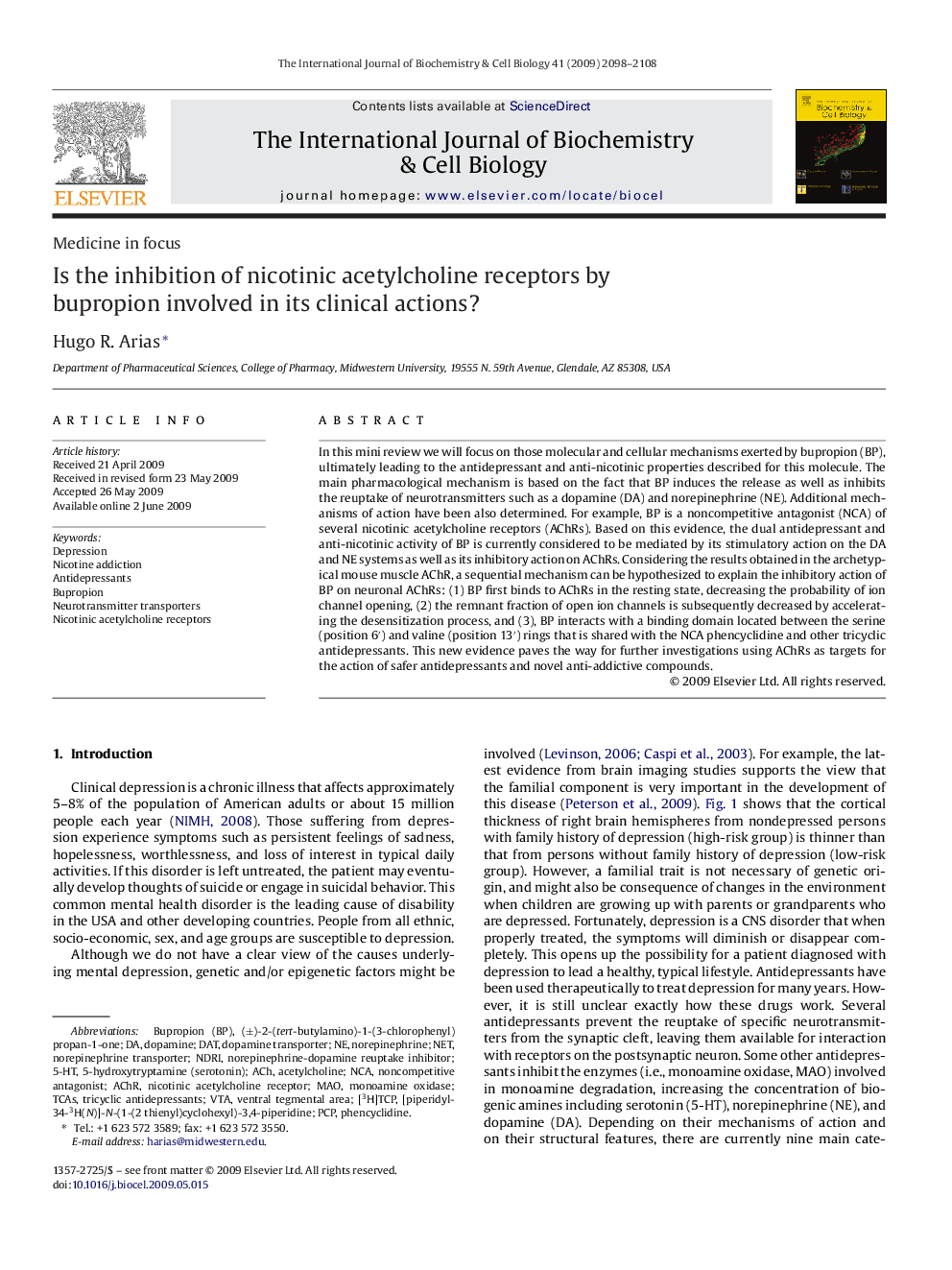| Article ID | Journal | Published Year | Pages | File Type |
|---|---|---|---|---|
| 8325559 | The International Journal of Biochemistry & Cell Biology | 2009 | 11 Pages |
Abstract
In this mini review we will focus on those molecular and cellular mechanisms exerted by bupropion (BP), ultimately leading to the antidepressant and anti-nicotinic properties described for this molecule. The main pharmacological mechanism is based on the fact that BP induces the release as well as inhibits the reuptake of neurotransmitters such as a dopamine (DA) and norepinephrine (NE). Additional mechanisms of action have been also determined. For example, BP is a noncompetitive antagonist (NCA) of several nicotinic acetylcholine receptors (AChRs). Based on this evidence, the dual antidepressant and anti-nicotinic activity of BP is currently considered to be mediated by its stimulatory action on the DA and NE systems as well as its inhibitory action on AChRs. Considering the results obtained in the archetypical mouse muscle AChR, a sequential mechanism can be hypothesized to explain the inhibitory action of BP on neuronal AChRs: (1) BP first binds to AChRs in the resting state, decreasing the probability of ion channel opening, (2) the remnant fraction of open ion channels is subsequently decreased by accelerating the desensitization process, and (3), BP interacts with a binding domain located between the serine (position 6â²) and valine (position 13â²) rings that is shared with the NCA phencyclidine and other tricyclic antidepressants. This new evidence paves the way for further investigations using AChRs as targets for the action of safer antidepressants and novel anti-addictive compounds.
Keywords
MAO[3H]TCPNDRINCAnorepinephrine transporterTCAs5-HTVTAAChRPCPDAT5-hydroxytryptamine (serotonin)Noncompetitive antagonistAChAcetylcholinenicotine addictionDepressionDopamine transporterNeurotransmitter transportersBupropionNETAntidepressantstricyclic antidepressantsDopaminePhencyclidinemonoamine oxidaseventral tegmental areanorepinephrinenicotinic acetylcholine receptornicotinic acetylcholine receptors
Related Topics
Life Sciences
Biochemistry, Genetics and Molecular Biology
Biochemistry
Authors
Hugo R. Arias,
